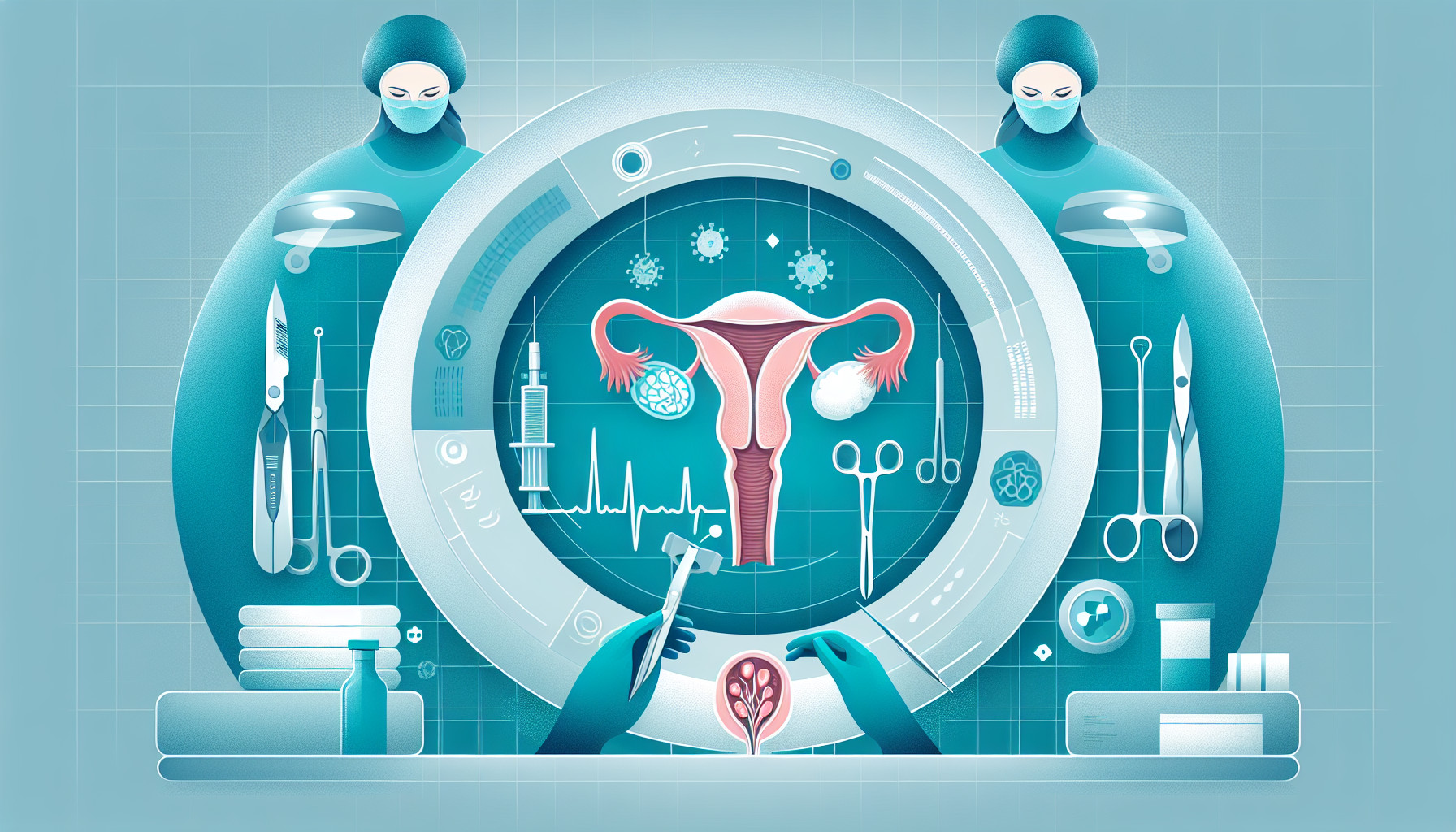Our Summary
This research paper discusses a rare case of a hydatid cyst in the ovary of a 72-year-old woman. These cysts are typically slow-growing and don’t cause any symptoms. This particular cyst was found when the woman was being examined for uterine prolapse, which is a condition where the uterus falls down into the vagina. The cyst was benign, or non-cancerous, and was discovered during an ultrasound scan of the pelvis. After discussing with cancer specialists, the doctors decided to perform a surgical procedure that involved removing the woman’s uterus, fallopian tubes, and ovaries through her vagina. The removed cyst was examined and confirmed to be a hydatid cyst. No other infections were found in the woman’s body, suggesting the ovary was the original site of the cyst. The woman did not experience any recurrence of the cyst after the surgery. The authors conclude that large cysts like this one are best treated with surgery to remove the entire cyst.
FAQs
- What is a hydatid cyst and how common is it in the ovary?
- How was the ovarian cyst detected in this case?
- What was the treatment for the ovarian cyst and was it successful?
Doctor’s Tip
A helpful tip a doctor might tell a patient about ovarian cyst removal is to follow post-operative care instructions carefully to ensure proper healing and minimize the risk of complications. This may include avoiding heavy lifting, taking prescribed pain medications as directed, and scheduling follow-up appointments to monitor recovery progress. It is also important to communicate any concerning symptoms, such as severe pain or fever, to your healthcare provider immediately.
Suitable For
Patients who are typically recommended for ovarian cyst removal include:
Patients with symptomatic cysts: Ovarian cysts that cause symptoms such as pelvic pain, bloating, or irregular menstrual periods may be recommended for removal to alleviate discomfort.
Patients with large cysts: Large ovarian cysts, particularly those that are greater than 10 centimeters in size, may be recommended for removal due to the increased risk of complications such as torsion (twisting) or rupture.
Patients with complex cysts: Complex ovarian cysts, which may contain solid components or have irregular borders, may be recommended for removal to rule out the possibility of ovarian cancer.
Patients with recurrent cysts: Patients who have a history of recurrent ovarian cysts may be recommended for removal to prevent future cyst formation and reduce the risk of complications.
Postmenopausal patients: Postmenopausal women with ovarian cysts may be recommended for removal, as the risk of ovarian cancer increases with age and the presence of a cyst in this population may warrant further evaluation.
Patients with suspected endometriomas: Ovarian cysts that are suspected to be endometriomas, which are cysts filled with endometrial tissue, may be recommended for removal to alleviate symptoms and improve fertility in women trying to conceive.
Overall, the decision to recommend ovarian cyst removal is based on the size, type, and symptoms associated with the cyst, as well as the patient’s age and overall health status. It is important for patients to discuss their individual case with their healthcare provider to determine the most appropriate treatment plan.
Timeline
Before ovarian cyst removal:
- Patient may experience symptoms such as pelvic pain, bloating, irregular menstrual cycles, or pain during intercourse.
- Patient may undergo imaging tests such as ultrasound or MRI to diagnose the ovarian cyst.
- Doctor may recommend watchful waiting or medication to manage symptoms before deciding on surgery.
- Patient may undergo preoperative evaluations and tests to assess their overall health before the surgery.
After ovarian cyst removal:
- Patient undergoes surgery to remove the ovarian cyst, which can be done through laparoscopic or open surgery depending on the size and location of the cyst.
- Patient may experience postoperative pain, bloating, or discomfort and will be given pain medication to manage these symptoms.
- Patient may stay in the hospital for a day or two after surgery for monitoring and recovery.
- Patient will have follow-up appointments with their doctor to monitor their recovery and ensure there are no complications.
- Patient may experience relief from symptoms such as pelvic pain or bloating after the cyst is removed.
- Patient may need to take it easy and avoid strenuous activities for a few weeks after surgery to allow for proper healing.
What to Ask Your Doctor
- What are the risks and benefits of removing the ovarian cyst?
- What is the recovery process like after ovarian cyst removal surgery?
- Are there any alternative treatment options for ovarian cysts?
- Will removing the cyst affect my fertility or hormone levels?
- How often should I have follow-up appointments after the surgery?
- Are there any potential complications or side effects associated with ovarian cyst removal?
- What is the likelihood of the cyst being cancerous?
- How will the surgery be performed (laparoscopic vs. open surgery)?
- What should I do to prepare for the surgery?
- Are there any lifestyle changes I should make after the surgery to prevent future cysts from forming?
Reference
Authors: Katsamagkas T, Tsakiridis I, Evaggelinos D, Skafida P, Dagklis T, Kalogiannidis I. Journal: Int J Surg Case Rep. 2020;68:221-223. doi: 10.1016/j.ijscr.2020.03.006. Epub 2020 Mar 7. PMID: 32193140
